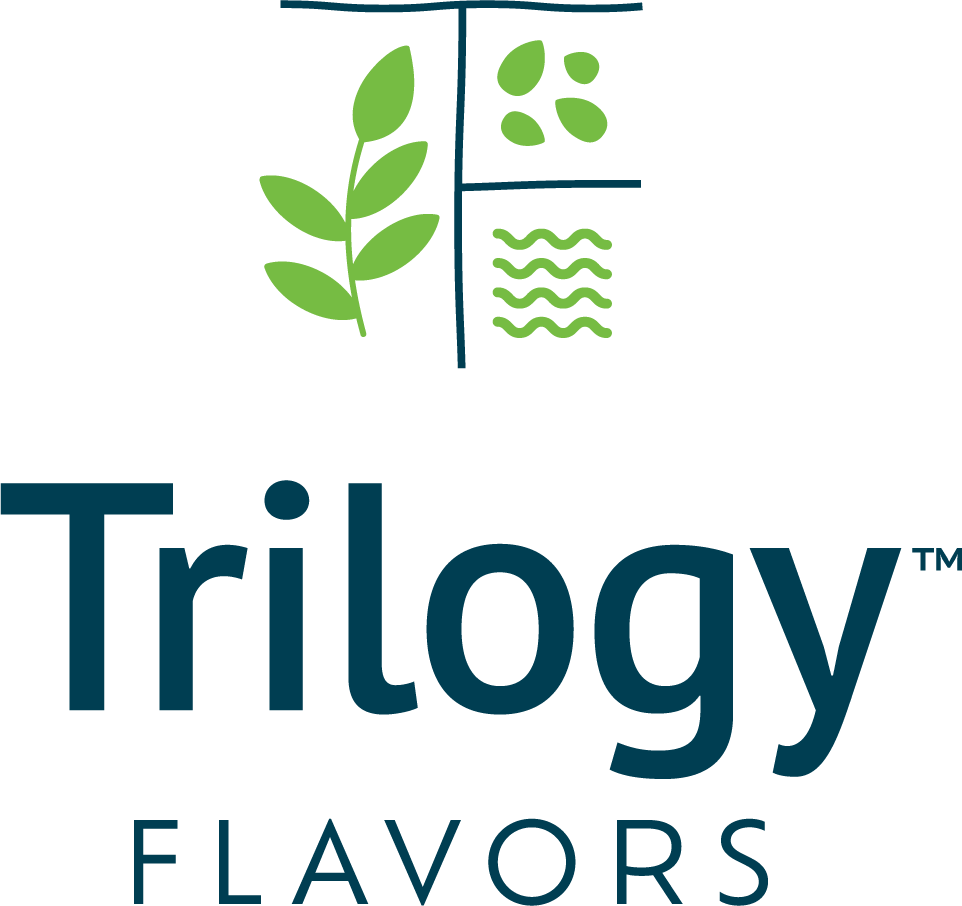As the demand for organic pet food continues to rise, pet owners are becoming more conscious of what goes into their furry companions’ bowls. While nutritional value is key, one factor that often gets overlooked is palatability—the ability of pet food to taste good enough to keep pets coming back for more.
After all, what’s a healthy meal if your dog or cat refuses to eat it?
In the world of organic pet food, finding the right balance between health and flavor can be a challenge. However, flavor development advancements are making it easier for manufacturers to create products that are both nutritious and irresistibly tasty. From roasted garlic and smoky bacon to grilled sirloin and grilled chicken, innovative natural flavor solutions are transforming mealtime for pets.
In this article, we’ll explore the latest trends in flavor development for organic pet food and how natural ingredients can enhance palatability, improve animal health, and meet the ever-growing demands of pet owners.
The Science Behind Palatability in Organic Pet Food
When it comes to organic pet food, creating a recipe that pets enjoy is just as important as ensuring its nutritional value. Palatability—the term used to describe how appetizing a food is—plays a pivotal role in a pet’s willingness to eat, and it’s far more complex than simply adding flavor.
Understanding the science behind palatability can help pet food manufacturers craft organic products that meet the nutritional needs of pets and keep them excited about mealtime.
Taste and Smell: The Power of a Pet’s Senses
For dogs and cats, food is often more than just fuel—it’s an experience. Their highly sensitive olfactory systems make smell a primary driver in how they perceive food. Unlike humans, who rely heavily on taste, animals like dogs and cats are more likely to follow their noses.
This means that the scent of organic pet food, whether it’s the savory aroma of roasted chicken or the rich scent of grilled sirloin, plays a key role in enticing them to eat.
But it’s not just the smell that counts. The taste of food also influences whether pets find it appetizing.
A pet’s taste buds are designed to detect specific flavors, and while they are more sensitive to certain tastes—like umami (savory)—their perception of sweetness is less pronounced. This means that organic pet food formulations must rely on more complex flavors that tap into a pet’s natural preferences, such as roasted meat or rich, smoky undertones.
Texture Matters Too
While flavor and aroma are essential, texture is another vital factor in palatability. The way food feels in a pet’s mouth can make or break their eating experience. For instance, wet pet food should have a moist, tender texture, while dry kibble must provide the right amount of crunch.
Organic ingredients in pet food often present unique texture challenges. Achieving the perfect balance of natural ingredients that doesn’t compromise on texture is crucial to keeping pets satisfied.
Organic Ingredients and the Palatability Puzzle
Organic ingredients, while valued for their health benefits, sometimes present challenges in maintaining flavor consistency. Without the use of artificial flavor enhancers, pet food manufacturers must rely on naturally derived ingredients to enhance taste and appeal.
This is where expertise in flavor development becomes indispensable. Trilogy’s natural flavor solutions, such as roasted garlic concentrates and smoky bacon flavors, are crafted to amplify the taste experience, ensuring that organic pet food is as enjoyable as it is healthy.
Additional reading: Developing Palatability Tests for Pet Food

Natural Flavor Solutions for Pet Food Manufacturers
When crafting organic pet food, one of the most critical factors is making sure that the final product meets the nutritional standards and delivers an irresistible taste that pets will love. That’s where natural flavor solutions come into play. For pet food manufacturers, finding the right balance of natural ingredients that enhance flavor without compromising on the integrity of organic standards is key.
Harnessing the Power of Nature
Organic pet food may lack the artificial flavors and additives commonly used in conventional pet foods, but that doesn’t mean it has to be lacking in taste. In fact, many organic ingredients have a rich, robust flavor profile that can be expertly leveraged to create products that dogs and cats crave.
Natural flavoring agents, such as roasted garlic and roasted onion concentrates, bring depth and savory notes that pets find appealing. These natural flavors help manufacturers avoid synthetic additives while ensuring a hearty, satisfying taste. By carefully selecting ingredients like these, pet food makers can create rich, mouthwatering flavors that elevate the organic experience.
The Appeal of Meat-Based Flavors
One of the most powerful flavor profiles in pet food is the taste of meat. Whether it’s grilled chicken, smoky bacon, or tender roast beef, pets are naturally drawn to meaty flavors. Trilogy has perfected the art of recreating these tastes through natural flavor compounds.
The savory, umami-rich essence of roasted meats and grill marks can be captured without the need for artificial flavorings, ensuring that organic pet food delivers an authentic, satisfying meal every time.
For pet food manufacturers, offering a variety of meat-based flavors allows them to appeal to different palates. Dogs and cats, especially, can get bored with the same flavor offerings. By including an assortment of flavors like grilled pork, poultry, or even roast beef drippings, manufacturers can ensure that their products stand out on the shelves and keep pets coming back for more.
Tailored Solutions for Every Product Type
Different types of pet food, whether dry kibble, wet food, or canned meals, all present unique challenges in flavor development.
The process of flavoring dry kibble, for example, requires a more concentrated form of flavor to ensure that it stays appealing even after the food has been stored for extended periods. Wet food, on the other hand, allows for a more vibrant, immediate flavor profile that can mimic the fresh taste pets love.
Trilogy understands these nuances, offering tailored natural flavor solutions for each product type. Their line of high-quality flavor concentrates, including smoked and grilled flavors, can be customized to suit the texture and formulation of any pet food product.
Whether you’re looking to develop a new line of wet food with a fresh, roasted chicken profile or create a dry kibble with a savory grilled sirloin finish, Trilogy’s natural flavorings help ensure that each bite is a hit with pets.
A Flavorful Future with Organic Pet Food
As more pet food manufacturers embrace organic standards, the demand for natural flavor solutions continues to grow. The challenge lies in creating flavors that are not only appetizing but also align with the growing consumer preference for clean, organic ingredients.
Trilogy’s natural flavor formulations provide the perfect solution—offering manufacturers the flexibility to craft pet food that meets both nutritional and sensory expectations.

Innovations in Organic Pet Food Flavors
The world of organic pet food is evolving fast, with pet owners becoming more discerning about both the quality of ingredients and the variety of flavors they offer their furry friends. Gone are the days when pets were limited to the basic flavors of chicken or beef.
Today’s pet food landscape is marked by exciting innovations in flavor development, driven by a desire to provide both unique taste experiences and high-quality, organic nutrition.
Exploring Exotic Protein Sources
While chicken, beef, and lamb have traditionally been the go-to proteins in pet food, the rise of novel protein sources is a significant trend. Exotic meats like venison, bison, and even kangaroo are gaining popularity in organic pet food formulations, offering both variety and a higher level of sustainability.
These proteins not only provide pets with a new and exciting flavor profile but also appeal to pet owners seeking to diversify their pets’ diets.
Trilogy is at the forefront of this trend, helping pet food manufacturers incorporate these exotic proteins into their formulations while ensuring that the natural, organic flavor profiles are maintained. With flavors like roasted bison or venison stew, manufacturers can create meals that stand out with bold new tastes that appeal to adventurous pets.
Plant-Based and Vegetable Flavors
As more pet owners explore plant-based diets for their pets, the demand for vegetable-based flavors in organic pet food is rising. Flavor options like sweet potato, pumpkin, and spinach are becoming increasingly popular as pets—especially dogs—are benefiting from the nutritional value these plant-based ingredients offer. The challenge lies in making these plant-based flavors just as enticing as their meat-based counterparts.
Here’s where Trilogy’s expertise shines. By using techniques to concentrate and enhance natural vegetable flavors, Trilogy helps manufacturers create savory, hearty, and balanced flavor profiles that pets find irresistible. Imagine a savory pumpkin puree paired with the deep, roasted taste of organic chicken. This combination can make a pet’s mealtime both exciting and nutritious, all while maintaining the integrity of the organic label.
Smoky, Grilled, and Charred Profiles: Adding Complexity
Another growing trend in organic pet food flavors is the introduction of smoky, grilled, and charred flavor profiles. These flavors mimic the cooking techniques that pets are naturally drawn to in their human companions’ meals, bringing a sense of richness and depth to the food.
Trilogy’s smoked bacon, grilled pork, and char-grilled chicken flavors deliver this complexity, tapping into a taste profile that pets love. These natural flavors are not only mouthwatering but are also able to capture that perfect balance of savory and smoky, providing a mealtime experience that’s closer to a “gourmet” experience than ever before.
As organic pet food moves toward more nuanced and sophisticated flavor profiles, Trilogy continues to help manufacturers craft flavors that elevate the standard for what’s available on the market.
Sustainability in Flavor Creation
Sustainability is at the heart of the organic movement, and flavor development is no exception. As pet owners continue to prioritize eco-friendly options, manufacturers are looking for ways to create flavors that not only taste good but also align with sustainability goals.
This includes sourcing ingredients that are ethically produced, reducing food waste, and using natural flavor solutions that are both effective and environmentally friendly.
Trilogy’s flavor solutions are crafted with sustainability in mind, offering natural, organic flavor ingredients that meet the demands of both manufacturers and environmentally-conscious consumers. By using responsibly sourced ingredients and focusing on natural flavor extraction methods, Trilogy ensures that their flavors not only taste great but also align with the growing desire for sustainable pet food options.

The Role of Antimicrobials and Antioxidants in Flavor Stability
When developing organic pet food, it’s easy to focus on the front-end experience—flavor, aroma, texture—but behind the scenes, another critical component is quietly doing its job: preserving that flavor over time.
Organic standards often limit the use of synthetic preservatives, which means manufacturers must get creative when it comes to maintaining freshness, palatability, and product safety. This is where natural antimicrobials and antioxidants step into the spotlight.
Why Flavor Stability Matters
No matter how delicious a recipe may be at the time of production, if that flavor degrades during transport or while sitting on a shelf, it can lead to product rejection—by both pets and their owners.
Fats and oils, commonly used in organic pet food for energy and palatability, are especially prone to oxidation, which can lead to off-flavors and undesirable odors.
In addition, organic formulations often rely on real meats, vegetables, and nutrient-rich fats—all of which are more sensitive to spoilage. Without effective protection, these ingredients can become a liability, compromising both product quality and safety.
Nature-Derived Solutions That Work
To address these challenges, Trilogy offers a line of oleoresin-based antimicrobials and antioxidants that are specifically designed for animal nutrition. Derived from natural sources like herbs and spices, such as basil oil, cassia oil, rosemary, oreganum, and thyme, oleoresins offer concentrated flavor and functional properties that support both flavor preservation and food safety.
Antioxidants help slow down the oxidation process in fats and oils, protecting the integrity of flavors over time. Meanwhile, antimicrobials work to inhibit the growth of spoilage organisms and pathogens, extending shelf life without compromising organic integrity.
Balancing Shelf Life with Organic Standards
Formulating for flavor stability in organic pet food requires a delicate balance. It’s not just about keeping the food fresh—it’s about doing so without resorting to artificial preservatives or harsh chemical treatments. Trilogy’s natural oleoresin-based systems are well-suited to this task. They allow manufacturers to maintain high palatability while adhering to clean-label expectations and organic certification requirements.
These natural stabilizers also support better animal health. By minimizing microbial growth and oxidation-related spoilage, they help ensure that pets are consuming food that’s not just flavorful, but also safe and nutritionally intact.
A Quiet Hero in Flavor Development
While antimicrobials and antioxidants may not be the stars of the flavor show, they’re absolutely essential to ensuring that the pet food experience is consistently enjoyable—from the first bite to the last.
As manufacturers look for reliable, natural tools to maintain flavor quality in organic pet food, Trilogy’s oleoresin-based solutions offer a proven path forward—quietly guarding taste, freshness, and nutritional value behind the scenes.

Balancing Health and Taste in Organic Pet Food Formulations
In today’s pet food market, it’s not enough for organic pet food to check the “clean label” box. Pet owners want it all: responsibly sourced ingredients, targeted health benefits, and—most importantly—a product their pets will devour with enthusiasm.
The challenge for manufacturers is balancing these priorities without compromising on flavor or nutritional integrity. That’s where strategic flavor formulation makes all the difference.
Functional Ingredients Meet Flavor Expertise
Organic pet food often includes functional ingredients aimed at supporting specific aspects of animal health—think turmeric for inflammation, prebiotics for gut health, or flaxseed for a shiny coat. While these ingredients offer real benefits, they can sometimes introduce off-notes or bitterness that pets are quick to reject.
The solution? Pairing those functional ingredients with complementary flavor profiles that mask undesirable tastes while enhancing the overall eating experience.
Trilogy specializes in this nuanced approach—crafting natural flavors like smoky bacon or grilled chicken that don’t just add appeal but help harmonize the full formulation. This ensures pets enjoy every bite, and manufacturers can include the health-supportive components today’s consumers expect.
Appealing to the Pickiest Palates
Cats and dogs each bring their own quirks to the bowl. Cats, for instance, are known for their selective tastes and heightened sensitivity to texture and aroma. Dogs, while often more eager eaters, can still lose interest in monotonous meals.
Organic ingredients, by their nature, can vary in flavor intensity or require more subtle seasoning, which makes expert flavor blending even more critical.
By tailoring flavors for species-specific preferences, Trilogy helps manufacturers develop organic pet food that appeals to even the most discerning pets. Roasted meats, brothy undertones, and lightly caramelized vegetable notes can turn a functional formula into a feast.
Supporting Wellness Without Compromising Palatability
For pet food developers, there’s always a risk that prioritizing health too heavily might impact taste—and vice versa. But the two don’t have to be at odds. When flavor and function are developed in tandem, the result is a product that supports animal wellness and still earns a “paws up” at mealtime.
Whether it’s boosting joint health in senior dogs, enhancing digestion in sensitive cats, or supporting weight control in indoor pets, Trilogy’s flavor systems are designed to work seamlessly with functional formulations. By elevating both taste and health benefits, Trilogy helps manufacturers create organic pet food that truly satisfies—from nose to tail.
Additional Reading: Hot Dog – Spotlight on Pet Food Trends

Conclusion
As the organic pet food market grows, so does the pressure on manufacturers to deliver products that meet a high standard of quality, health, and taste. Palatability is no longer optional—it’s essential.
From enticing natural flavors like roasted garlic and grilled sirloin to clean-label antimicrobials and antioxidants that preserve freshness, every detail matters when crafting organic formulations pets will love.
At Trilogy, we understand that flavor development is both an art and a science. Our team of formulation experts partners with pet food manufacturers to create natural, organic flavor systems that elevate palatability, support wellness, and keep tails wagging.
Whether you’re reformulating an existing product or launching something entirely new, we’re here to help you meet the moment—deliciously and naturally.
Talk with us — Let’s create something flavorful, functional, and pet-approved—together.






